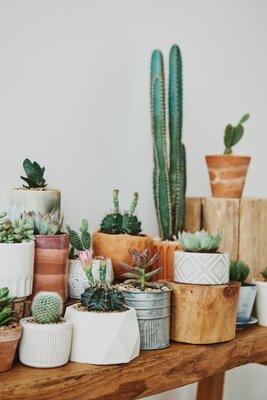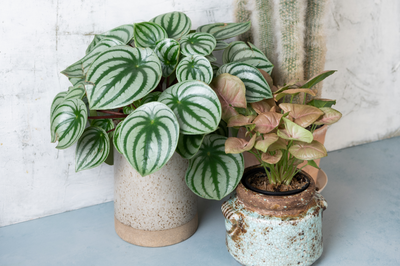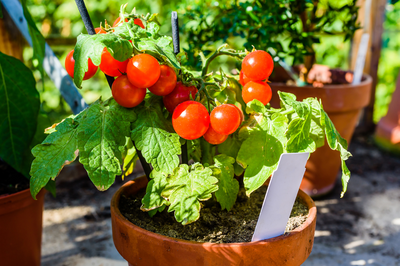
CARE IN SUMMER -
Keep the room temperature between 15 degrees and 25 degrees for best results. Make sure your Cacti/Succulent is in a semi-sheltered, slightly shady position outdoors or on a south facing window sill indoors. If you want to place them in a greenhouse some shade and ventilation would be essential.
Water your Cacti/Succulent well but allow to dry out between watering. A light mist spaying once or twice a week in the early morning or late evening helps to stimulate the dew that would occur in their natural habitat.
Feed your Cacti/Succulent every two weeks with a low nitrogen or specialist cactus fertilizer using half strength mix at the start and end of the growing season (mid April to mid September)
Slow down watering in Autumn, allow maximum light and a drop in night time temperature. A Winter rest period is essential to keep the plants growing well.
CARE IN WINTER -
Keep the room temperature to around 10 degrees in a greenhouse, shed or well lit window sill. Under no circumstances allow the temperature to drop below zero as this might be fatal for the plant.
Water very sparingly every month to prevent shrivelling.
No feeding is required in Winter.
Place the plants somewhere brighter and warmer in Spring to encourage new growth. Start watering a little at a time and do not feed until new growth is progressing well.
RE-POTTING -
Choose a container with good drainage, around 1-2 inch diameter larger than the plant to be re-potted. For columnar cacti 2-4 inches depending on size, terracotta pots are ideal as they tend to dry out quicker.
Place half an inch to an inch layer of broken crocks or gravel in the bottom of the pot to assist drainage.
Use proprietary cactus compost or a mix of 2 parts compost, one part sand and one part gravel.
Take the plant out of it's pot using thick gloves or a cloth wrapped around the plant. For hook spined cacti use a paper collar wrapped around the plant. Take the root ball apart, gently removing as much of the old compost as possible, trim off any dead or matted roots.
Place the plant in it's desired position and fill around the roots with compost. Firm down gently with a dibber or pencil and tap the pot on a hard surface a few times to settle the compost around the roots.
You may use a top dressing such as pea gravel or coarse grit to aid moisture retention and make it more attractive.
PESTS & DISEASE -
The most common pests are mealy bugs (small pink/white things covered in a white fluffy substance). Red spider mites (tiny orange insects that dislike humidity) and scale insects (2mm wide limpet like things stuck to the body). All are easily dealt with using an insecticide containing Thiacloprid such as Westland Plant Rescue Bug Killer for Ornamental Plants or based on fatty acids such as Phostrogen's safe houseplant insecticide.
Less common pests are root mealy bugs (similar to other mealy bugs but attached to the roots), sciarid fly (more specifically the larvae) and vine weevil larvae (both latter are small and maggot like). The best way to get rid of these critters is to re-pot the plant into fresh soil, then follow up with a systemic insecticide such as Bio Provado Vine Weevil Killer, which will kill all these soil borne pests. Green fly, whitefly, blackfly and other aphids can be dealt by using common insecticides.
Diseases are less common, but can be encountered. By far the most common is basal rot, where the neck of the plant by the soil turns soft and black or brown. Cut out the infected part or if too severe cut the top of the plant off so that only healthy growth remains. Treat this as a cutting and wait for roots to appear. In both cases dust cut areas with green or yellow sulphur to reduce chance of fungal infection.
Mildew can also affect Cacti and Succulents. Use a fungicide suitable for ornamentals and flowering plants. Black spot and rust are less common and can usually be treated with some fungicide for mildew attacks. Bayer fungus fighter or Scott's fungus clear are effective systemic remedies.
Whenever using chemicals, please read the labels.





